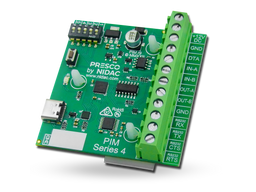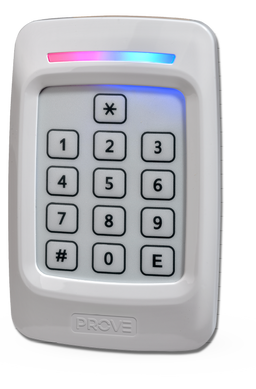Why you need a Presco PIM from NIDAC
13 FEBRUARY 2024 | WRITTEN BY BRAD
Designed and manufactured right here in Australia
As a data format converter
- Capable of over 20 different types of data conversion
- Presco, Wiegand, Clock & Data, USB, RS232, Dallas iButton
As a Wiegand range extender
- Extend the range of your Wiegand readers to a kilometre
Having trouble with your card reader in an elevator?
- Our NIDAC Presco format is immune to RF and induced electrical noise
You want all of your access credentials to have the same site code, or a different site code
- With a PIM you can send the card data to your access control panel with a new site code
So let’s have a deeper look at some of these features.

The Presco Interface Module, or PIM, is a unique device manufactured by NIDAC right here in Melbourne, Australia.
So what does the PIM do? When the PIM is used solo it converts common data formats to another format. For example, NIDAC Presco format can be converted to Wiegand, Clock & Data, RS232 or USB. Wiegand can be converted to Presco, or to a different Wiegand format, or Wiegand to Wiegand but with a different site code.
What I believe is the real magic of the PIM is when it is used as a Wiegand extender. There are a couple of scenarios that can highlight how this works.

The first is where you want to send Wiegand over a long distance. Wiegand is limited to between 100 and 150 metres, depending on the gauge of cable. With a couple of PIM’s you can stretch that out to a kilometre.
The second 2 PIM setup is where you have an electrically noisy environment, say an elevator lift shaft. The PIM’s will clean up the noise and give you stable data transmission between the card reader and your access control panel.
So how is this achieved? With our proprietary NIDAC Presco format which is immune to RF noise and can travel up to a kilometre.
So, if we look at the first example where we are sending Wiegand data over a long distance, the first PIM converts the Wiegand data from the card reader to Presco format, which is then good for up to 1 kilometre. At the control panel end the second PIM converts the Presco data back to Wiegand. Magic done!
In our other scenario we want to get stable data transmission in an electrically noisy installation, the basic concept is the same. We have our reader to PIM at one end and PIM to access panel at the other end. What we are taking advantage of here is the Presco format’s immunity to RF and inducted interference. Older style lift cars are notably susceptible to this problem. Other situations might include cables that are run near flouro lights, or cables run alongside 240 volts. Magic done!
Another neat trick with the PIM is the ability to replace the Wiegand site code. If your credentials have a variety of site codes but you want the access control system to receive all of the data with the same site code the PIM will do this with ease. In the following screenshots we have programmed the Transmit Received Site Code in memory 105 to No & the Site Code in memory locations 125 to 128 to 111. The net effect of these changes is that the PIM will replace the credential’s site code with 111, regardless of what it is on the card.
The PIM is simple to program with a NIDAC PSK2 keypad, or via the onboard USB-C connector and our free Windows software. We can set parameters such as Wiegand site code bits, card number bits and total number of bits. For example, the factory default is to receive Wiegand 26 bit, 8 bits for the site code and 16 bits for the card number, but these can be changed to 32 bit site code and between 8 and 128 bits for the card number.



So there you have it, an introduction to our unique Presco Interface Module. On the PIM PRODUCT PAGE there is more info including a brochure, installation manual and software downloads.
and stay tuned for more informative blogs from NIDAC.













